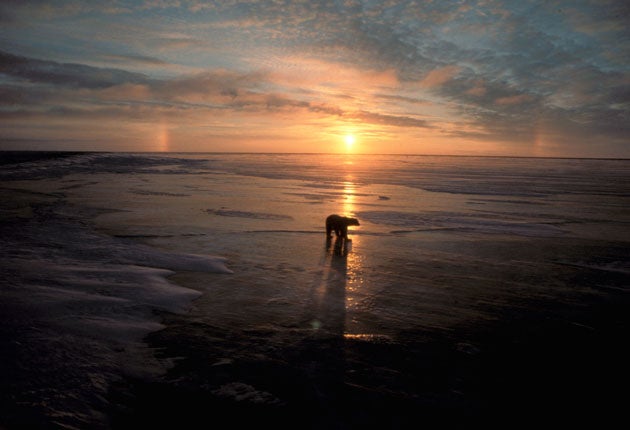Melting polar ice creates a new challenge for British adventurers

Your support helps us to tell the story
From reproductive rights to climate change to Big Tech, The Independent is on the ground when the story is developing. Whether it's investigating the financials of Elon Musk's pro-Trump PAC or producing our latest documentary, 'The A Word', which shines a light on the American women fighting for reproductive rights, we know how important it is to parse out the facts from the messaging.
At such a critical moment in US history, we need reporters on the ground. Your donation allows us to keep sending journalists to speak to both sides of the story.
The Independent is trusted by Americans across the entire political spectrum. And unlike many other quality news outlets, we choose not to lock Americans out of our reporting and analysis with paywalls. We believe quality journalism should be available to everyone, paid for by those who can afford it.
Your support makes all the difference.The retreat of sea ice in the Arctic is not just opening up the fabled North-West Passage to shipping. It has made it possible for explorers to row to the North Pole.
A team of British adventurers is about to cast off in an attempt to be the first people in the world to row a boat to the magnetic North Pole.
Rowboats haven't featured in polar exploration since 1916, when Ernest Shackleton got his men off an ice floe and on to the relative safety of Elephant Island before going on to South Georgia to get help, after his abortive attempt to cross Antarctica.
The new team, led by the veteran adventurer Jock Wishart, hopes to set out from Resolution in Canada at the end of July and row the 450 miles to the Pole in a specially designed boat.
On the way they will face howling winds that, despite it being the Arctic summer, will bring temperatures down to -15C.
The six-man crew will also face the prospect of being crushed or capsized by moving ice floes and attacked by hungry polar bears.
Average temperatures in the Arctic and Antarctic regions have risen by more than anywhere else in the world, and it is having an impact on the ice.
Satellite pictures show that in the past 30 years the sea ice has retreated dramatically. By the end of last summer the Arctic ice had shrunk to its third smallest area on record, the National Snow and Ice Data Centres, part of the University of Colorado in the US, found. The ice is breaking up so rapidly during the summer that some scientists believe the Arctic will be largely free of ice by the end of summertime by 2030 to 2040. Average temperatures for the region have risen by 1C in the past 20 years alone and are expected to continue rising.
With ice melting at a rate unseen in living memory, more parts of the Arctic Sea are becoming accessible. The changes have meant oil drilling in the region is now being considered as a practical proposition, yachts have been able to sail the North West Passage for the first time, and fresh challenges are opened up to people like Mr Wishart.
"We are seeing the shrinkage of the ice cover in the Arctic and consequently it becomes possible to row to a Pole. It's one of the very last great feats, being able to row to a Pole," he said.
Mr Wishart, a veteran of the Americas Cup who has previously walked to the magnetic North Pole, will carry out some scientific measurements with other members of the team while they are attempting the feat.
Among the measurements being take is the salinity of the water. Ice is fresh water and there are indications that vast quantities are ready to flow out of the Arctic into the Atlantic. The fresh water is forming a vast liquid cap in the Arctic, and there are fears that it could be released suddenly and cause the warm Gulf Stream's route to be changed.
One of the problems for the expedition, called the Old Pulteney Row to the Pole after the whisky maker that is sponsoring it, is that no one has attempted it before, meaning it is difficult to know how best to construct the boat. It is modified from a design that has been used for transatlantic crossings but the team is having to make educated guesses at how strong it needs to be to survive repeated bumps against the ice.
The boat also needs to be light enough for the crew to drag it on to the ice when the winds sweeping southwards become too much to row in.
The magnetic North Pole was chosen because the ice melt makes it feasible. The geographic North Pole may also become possible if the shrinkage continues at its present rate.
While rowing to a Pole is one of the newest challenges available to adventurers, Mr Wishart is doing it for one of the oldest reasons. "Because it's there, in the words of Mallory," he said. "Can you really do any better than that?"
Join our commenting forum
Join thought-provoking conversations, follow other Independent readers and see their replies
Comments